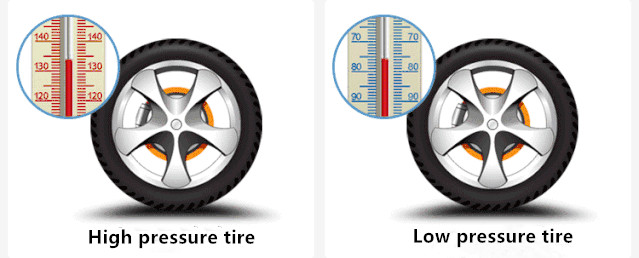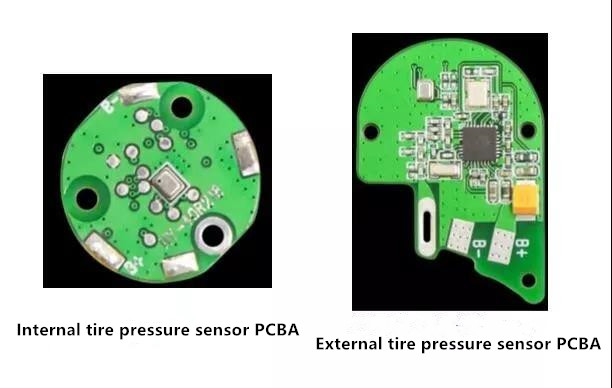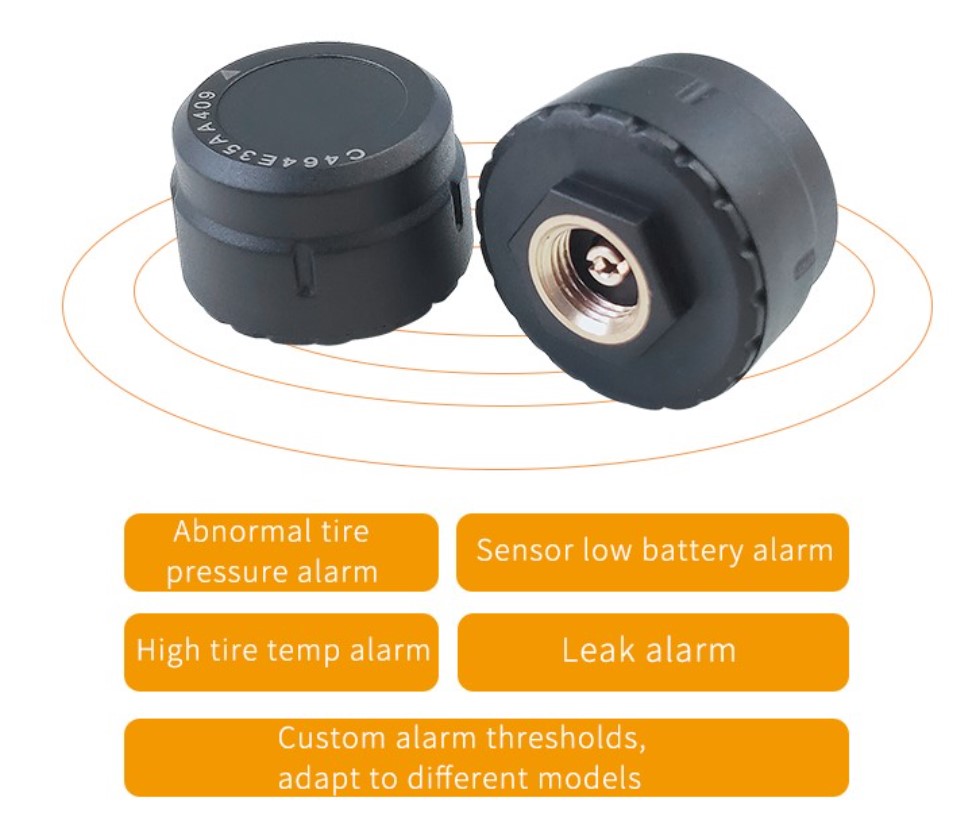TPMS stands for Tire Pressure Monitoring System, which is an auxiliary system installed on car tires to monitor tire pressure in real time. The tire pressure monitoring system, airbags, and ABS systems constitute three major safety systems for automobiles. It installs a transmitter containing a high-sensitivity temperature sensor and pressure sensor chip on each wheel, and monitors the temperature and pressure of the tire in real time in the driving or stationary state, and transmits it to the controller by radio frequency. When the tire leaks or the air pressure is low, the alarm will be issued to ensure the driving safety.

According to different sales methods, TPMS can be divided into front loading and back loading; according to different tire pressure testing methods, it can be divided into two types: direct and indirect. Direct is the mainstream solution.
Indirect (Wheel-Speed Based TPMS, WSB), TPMS monitors the relative pressure between the four tires. This system uses the wheel speed sensor of the ABS system of the vehicle to compare the speed difference between the tires to achieve monitoring for Purpose of tire pressure. ABS system uses wheel speed sensors to determine whether the wheels are locked, and thus decides whether to activate the anti-lock system. When the tire pressure decreases, the weight of the vehicle will make the tire diameter smaller, which will cause the vehicle speed to change. This change can be used to trigger an alarm system to warn the driver.
Behind the scenes are passive.
Direct (Pressure-Sensor Based TPMS, PSB), the tire pressure monitoring system uses the pressure sensor installed in each tire to directly measure the tire air pressure, and uses a wireless transmitter to send pressure information from the inside of the tire to a central receiver system on the module then displays clearly the tire pressure data. When the tire pressure is too low or leaks, the system will automatically alarm. Be proactive defensive.
The biggest difference between direct TPMS and indirect TPMS is that the direct can detect which tire loses pressure, while the indirect cannot. The performance of the indirect TPMS is not as good as the direct, but the cost of the direct TPMS is higher than the indirect.
In addition, direct TPMS can be divided into built-in type and external type according to different installation methods

Shengrun Technology PCBA Solution for Tire Pressure Monitoring
The built-in tire pressure sensor is placed inside the tire, and the position of the valve has the advantages: the tire pressure display is very accurate, and the sensor is hidden inside the tire, without experiencing wind and rain, good safety and long life. No changes can be seen from outside, inflation is not affected, and it can be charged inflation anytime and anywhere. Disadvantages: Installation is troublesome and you cannot operate it yourself, because you need to separate the tire from the wheel to install it, and you need to go to a repair shop. If the four-round transposition operation is performed, the tire pressure monitoring needs to be re-learned for pairing. Otherwise, the display will not be able to distinguish which round, or it will display the original position.

The external tire pressure sensor is directly fixed on the valve of the original vehicle, and it can be screwed directly. Advantages: easy installation, you can operate it yourself, which wheel is written on the sensor, you can screw to which wheel, you need to use a special wrench to tighten the anti-theft nut. When performing the tire rotation operation, there is no need to re-pair, only the sensor needs to be removed or placed in the original position. Disadvantages: The appearance is not good. There is an exposed tire pressure sensor on the valve, which is also vulnerable to damage. Inflating is also inconvenient. The sensor must be removed to fill it each time, because the sensor blocks the valve. Therefore, the special disassembly wrench should be carried with the vehicle. Don't lose it, otherwise you cannot inflate it.

